Thanks to SRAM’s Eagle groupset, 1×12 has been around a few years now. What was originally the preserve of those with bulging wallets is now available for a significantly more modest price, thanks to this NX level groupo.
One of the criticisms of early 1×10 and 1×11 set ups has been the spread of gears still doesn’t quite match up to a 2x and front mech. The big sell of Eagle is a whopper of a 50t sprocket at the back, to let you twiddle up the steepest of slopes, while maintaining a healthy spread of gears down to 11t (or 10t in the case of GX, X01 and XX1 Eagle).
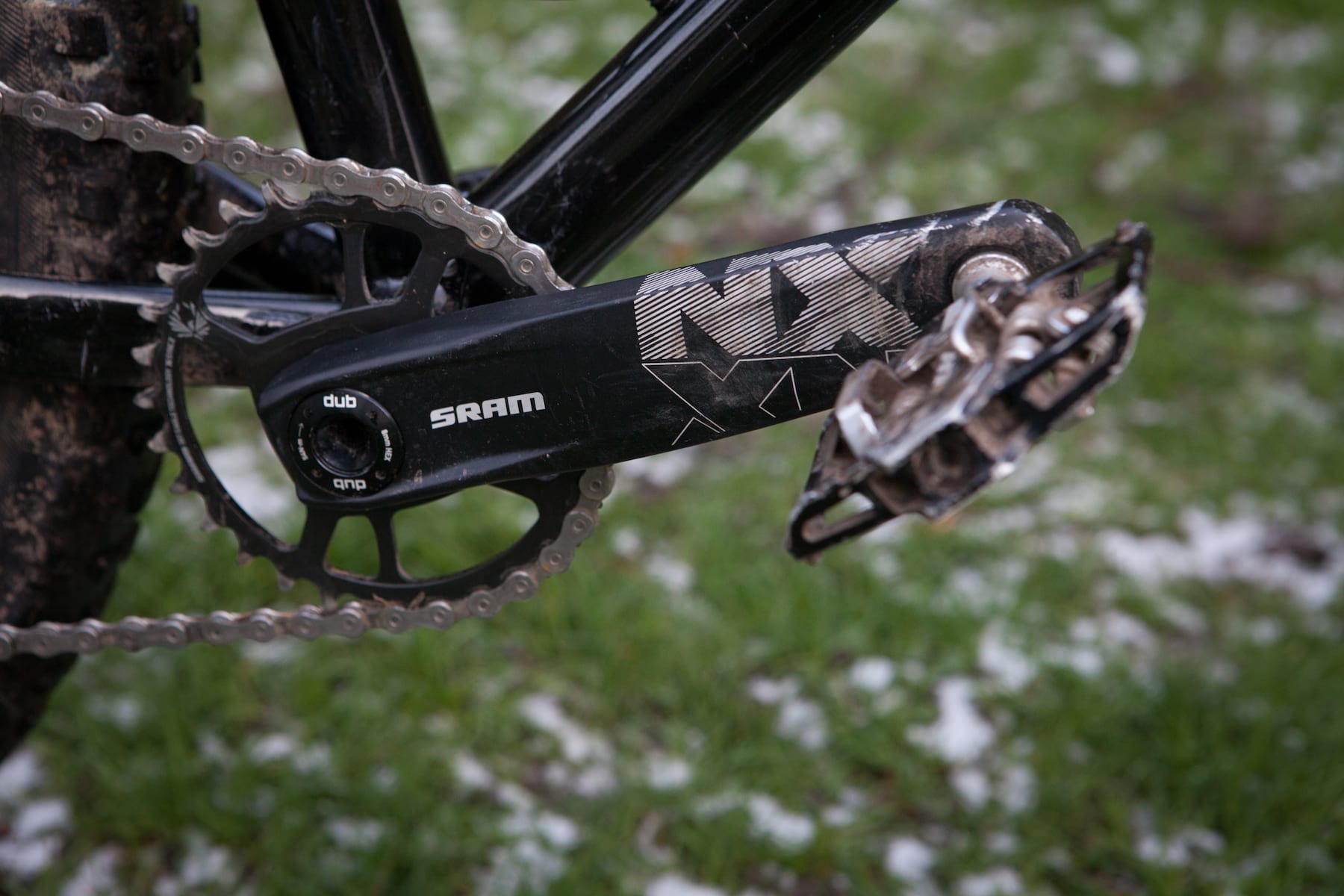
The NX groupset comes with everything that you’ll need to convert to twelve speed: Cassette, chain, rear mech, crankset and BB, and shifter. Our test set came with a 30t chainring to pair to the 50-11t cassette.
As someone who prefers to push a gear rather than spin away, I was a little sceptical of how often the 50t would see action, but I was just as sceptical when I first used an 11-speed set up with a 42t (why would I need that when a 36t was fine?) and quickly adapted, appreciating the ability to save my legs on long alpine climbs.
Latest Singletrack Merch
Buying and wearing our sustainable merch is another great way to support Singletrack
Perhaps I’d feel the same after some serious time with those extra eight teeth at the rear?
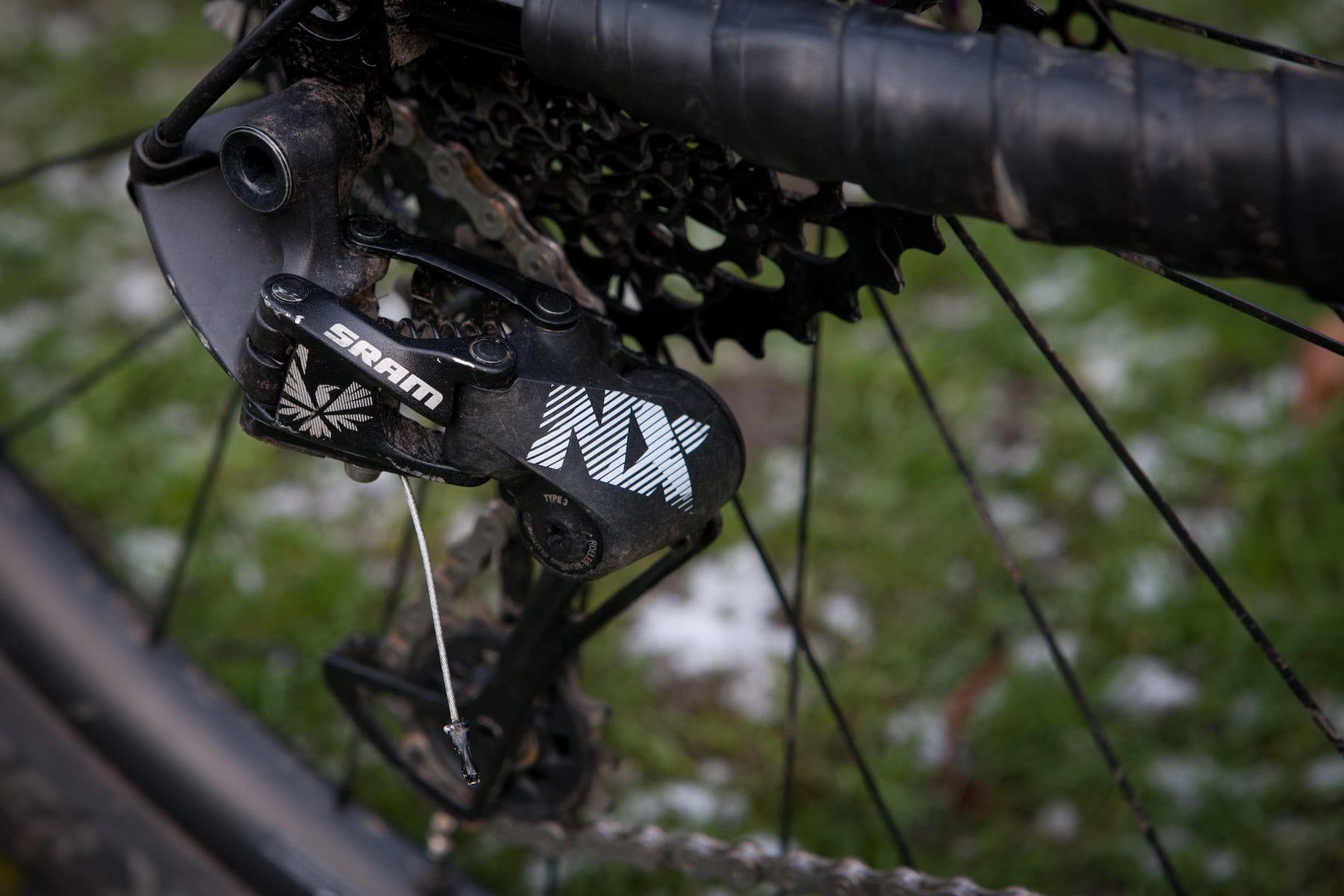
Fitting & Setup
The first thing to note is that the NX cassette uses a standard spline fitting to the freehub rather than the XD Driver that higher end SRAM groupsets use. For those already using this style of freehub, this is welcome news, as there’s no further expense of swapping parts. If you’ve already been using an XD driver-compatible 11sp cassette, it might be worth upgrading to GX Eagle, even if it’s just for the cassette.
The Eagle-eyed (jeez, I’m sorry), among you might have spotted that many of my photos feature a GX cassette, as I was swapping test wheels around. The NX PG-1230 cassette is a tad weighty (615g) – not surprising given the sheer amount of metal work needed and the lack of some of the machining found on SRAM’s higher end cassettes.
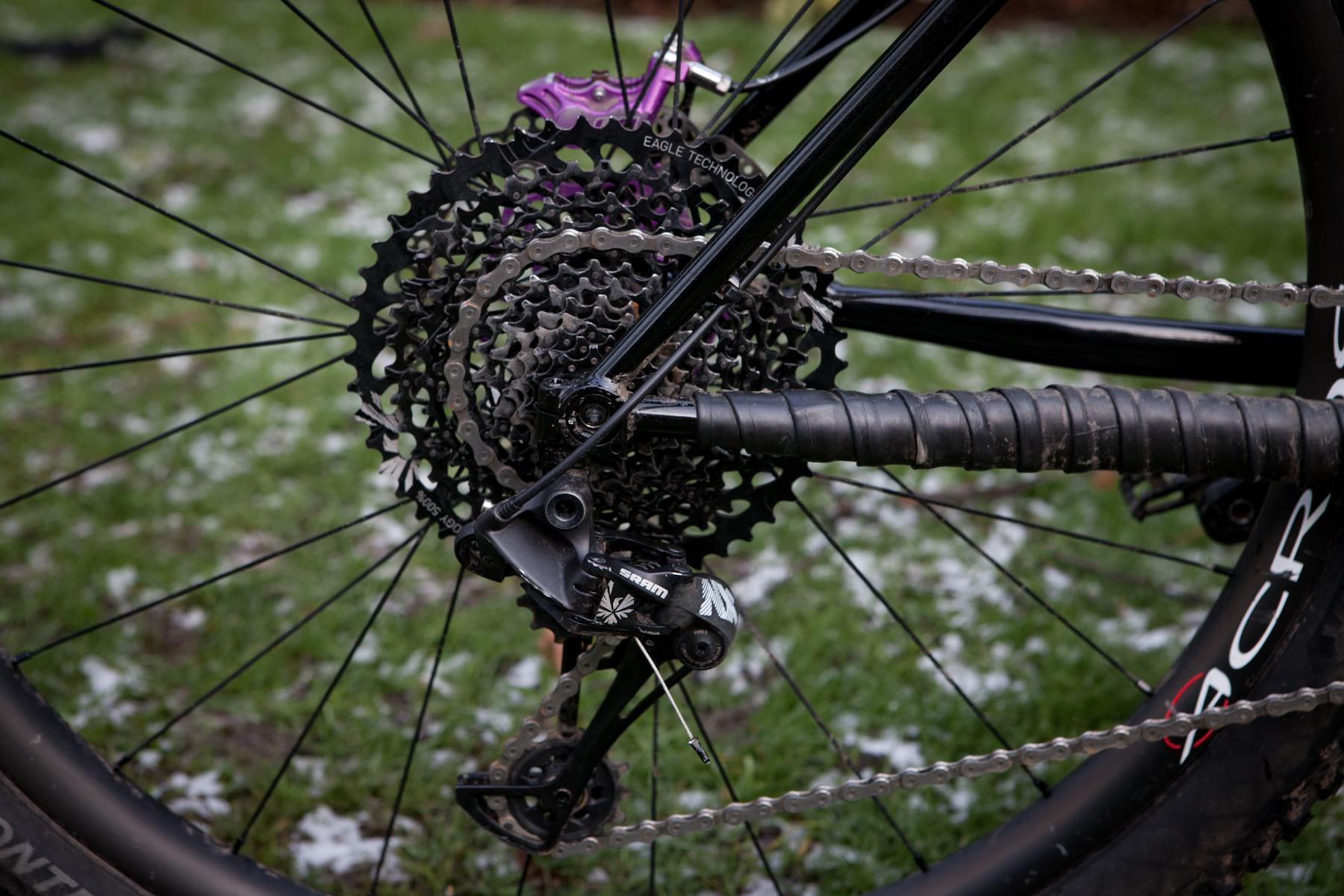
Each cog is steel – the largest four are pinned to an alloy carrier, the smallest eight slot on separately. In theory, while heftier, steel cogs should be more durable. In fact, the PG-1230 is the only cassette than SRAM recommends for e-bikes and the higher strain they place on drivetrains.
After the weight, the only other possible downside to the cassette is that due to the spline fitting, the smallest cog that it’s possible to fit is 11t (XD Driver based cassettes can squeeze in a 10t), sacrificing a little bit of range versus its more expensive stablemates.
I fitted the groupset to my Cotic SolarisMAX, which uses a standard threaded BB shell, but all current BB standards are covered. The BB uses SRAM’s DUB system. Rather than explain that in detail here, check out our first look when it was first launched.
In short, the crankset spindle is 28.99mm diameter rather than the more typical 30mm, giving a little more room for better sealing of the BB bearings. Another new axle “standard” is not something that I am necessarily leaping to embrace. In this case, assuming you are buying the full groupset, there’s little to worry about though. Just remember that if you want to swap cranks/BB you’ll need to make sure that you either swap both at the same time, or your new purchase is DUB compatible.
The crankset is a forged aluminium number, with an X-SYNC 2 direct mount chainring. As you’d expect, the chainring uses a narrow-wide tooth profile to improve chain retention. I can’t remember dropping a chain once during testing – it’s very good.
The shifter is mostly plastic, and doesn’t feature the same adjustment options as more expensive options in SRAM’s range. It is still matchmaker compatible though, meaning you can declutter your bars if you also use SRAM brakes.
Finally, the rear mech shares much visually and functionally with other SRAM derailleurs of recent years – it features a clutch spring to maintain tension, keeping things quiet and once again guarding against chain drops. There’s also a handy button to release the tension while removing the rear wheel.
On The Trail
Tuning the gears was a straight-forward affair, although I spent a smidge longer than normal making sure I’d adjusted the B-tension properly, after hearing a couple of reports that the NX’s shifting was a little more reliant on good set up. It’s hard to say whether that made a difference, but I’ve experienced excellent shifting throughout the test period.
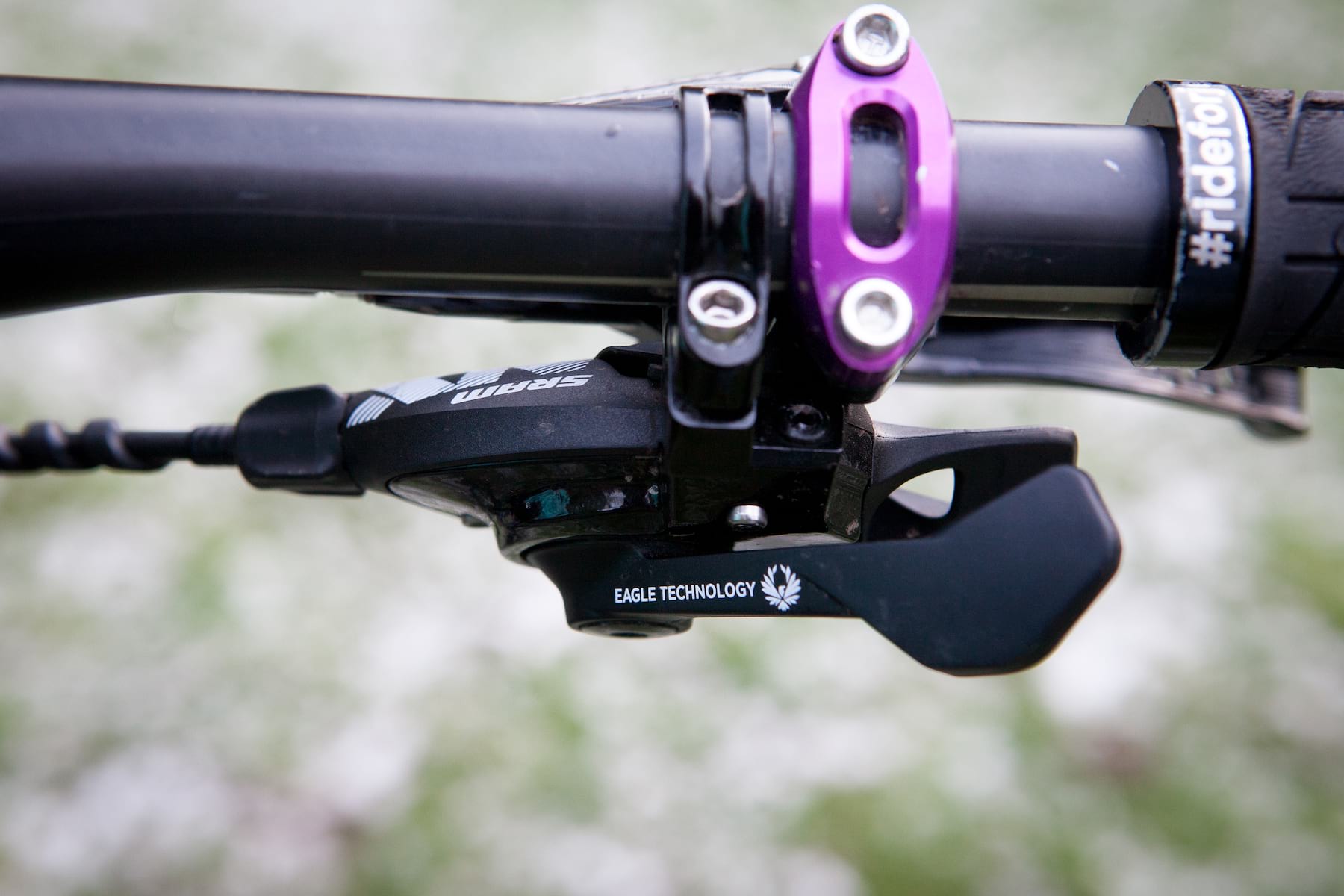
I swapped quite regularly between the NX and GX cassettes, and in all honesty, didn’t notice any difference at all in shifting performance between the two. The shifter definitely doesn’t feel quite as nice in use as higher end models. The plastic paddles simply don’t feel as tactile or positive as an alloy lever. Clicks are audible and can be felt though, and I very rarely miss-shifted. I know a few people who find the SRAM experience quite vague in comparison to Shimano, but I actually find Shimano clunky, preferring the gentler feel of SRAM.
I was particularly impressed towards the top of the range of the cassette, where the shifting stayed smooth, despite some larger jumps. Care is still needed when moving into the top two or three sprockets in particular, but a modicum of sympathy is all that is required.
I did notice that shifting quickly deteriorated as the gear cable stretched. It is something that I’ve noticed across the range of twelve speed cassettes that I’ve used, presumably a consequence of the tightly packed gears. A tweak of the barrel adjuster (which is at the shifter end, meaning it is possible to make small tweaks on the move) was all that was needed to bring things back into line though.
Most of the test period has been dry, but was bookended by grim conditions either side. During this period, I’ve been impressed with the wear rate, with cassette and chainring both holding up well (noting that the cassette has done half the miles of the rest of the groupset). The cranks are showing the usual battle scars, but have stood up well to the usual heal scuffs that seem to prematurely age many brands.
The chain has been quick to show the odd sign of rust. I’m not religious about washing/cleaning bikes, but at times it has only taken the length of a drive home from a ride for the odd spot of surface-orange to appear.
The only place that any wear is really noticeable is at the derailleur, where the main pivot (where the mech bolts onto the hanger) now has some visible play. It isn’t enough to cause shifting problems at the moment, but is something I’ve experienced on the NX 11-speed rear mech and ultimately marked the start of the end and a move to sloppy shifting over the next few months of heavy use. I’ll keep an eye on the 12-speed version and hopefully the play won’t get any worse.
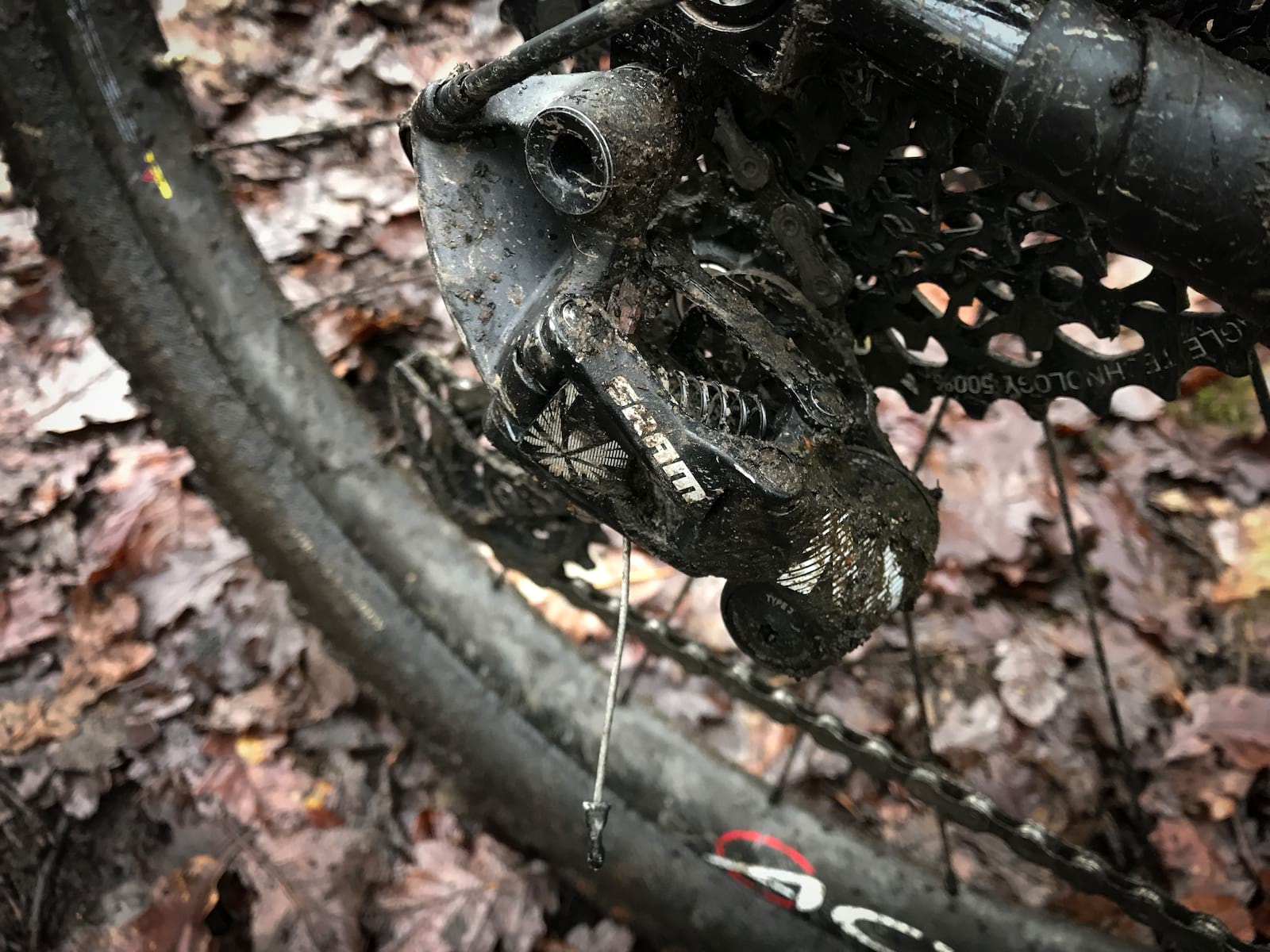
A couple of my fellow Singletrackworld testers have had some shifting issues with the NX drivetrains fitted to test bikes this year. I can only speak for my experience, and say that I haven’t been able to replicate those problems. Whether that’s down to spending the time getting B-tension right, the fact that I was running the drivetrain on a hardtail, and had no chain growth etc, or just good luck I don’t know… but, I also know that other testers here have had a trouble free ride as well.
Do You Need That 50t?
Due to the small chainring supplied on our sample groupset, I didn’t really use the 50t very often. For the most part it stayed clean as a whistle, to paraphrase Tim Krabbe’s The Rider. He would probably be mortified at the thought of such a huge gear spread, though. All of my riding on it was UK based, so climbing was rarely longer than an hour or so, and usually much, shorter. As I’ve previously mentioned, I’m also more of a gear grinder than a spinner as well.
Did I appreciate having the bail out option? I guess I did. And I did occasionally drop into it and use it to winch up stuff that I’ve normally only been able to climb when at my absolute fittest. It’s also always nice to look down at your cassette when your legs are tiring and see that you have a couple more gears to resort to.
Of course the 30t chainring meant that I spent the large chunk of many rides in the lower half of the cassette. Now that the test process is over, I think I’ll fit a 32t or maybe even a 34t chainring. That way I’ll make better use of the full range of gears, and take advantage of the bigger spread that comes with the 11-50t range. This is one of the advantages of a wide-range 1x drivetrain, and means you can easily adapt your gearing needs.
At the bottom of the cassette, I did appreciate the smaller 10t sprocket when I swapped to the GX cassette, again finding that I was spinning out the 11t too frequently on tarmac sections. I’m less bothered about this, as it would quickly be remedied by that larger chainring. Also – let’s face it, SRAM has done well to squeeze 12-speeds onto a regular freehub body.
Overall
If your current 11-speed set up feels limiting, especially when it comes to climbing gears, NX provides the least expensive off-the-shelf route to an extra gear. Whether that extra gear is hugely useful is likely to depend on your own riding preferences and the chainring size you pair it with.
In function, NX Eagle is as near as damn it as good as more expensive SRAM groupsets, at the expense of a bit of weight. There’s a minor question mark over the durability of the rear mech, but other than that, we’ve been impressed.
It might not look quite as bling as the gold XX1 or X01 offerings, but for less than the price of one of those cassettes, you can get an entire drivetrain. A great example of trickle down technology that has managed to keep the benefits of the top-end original.





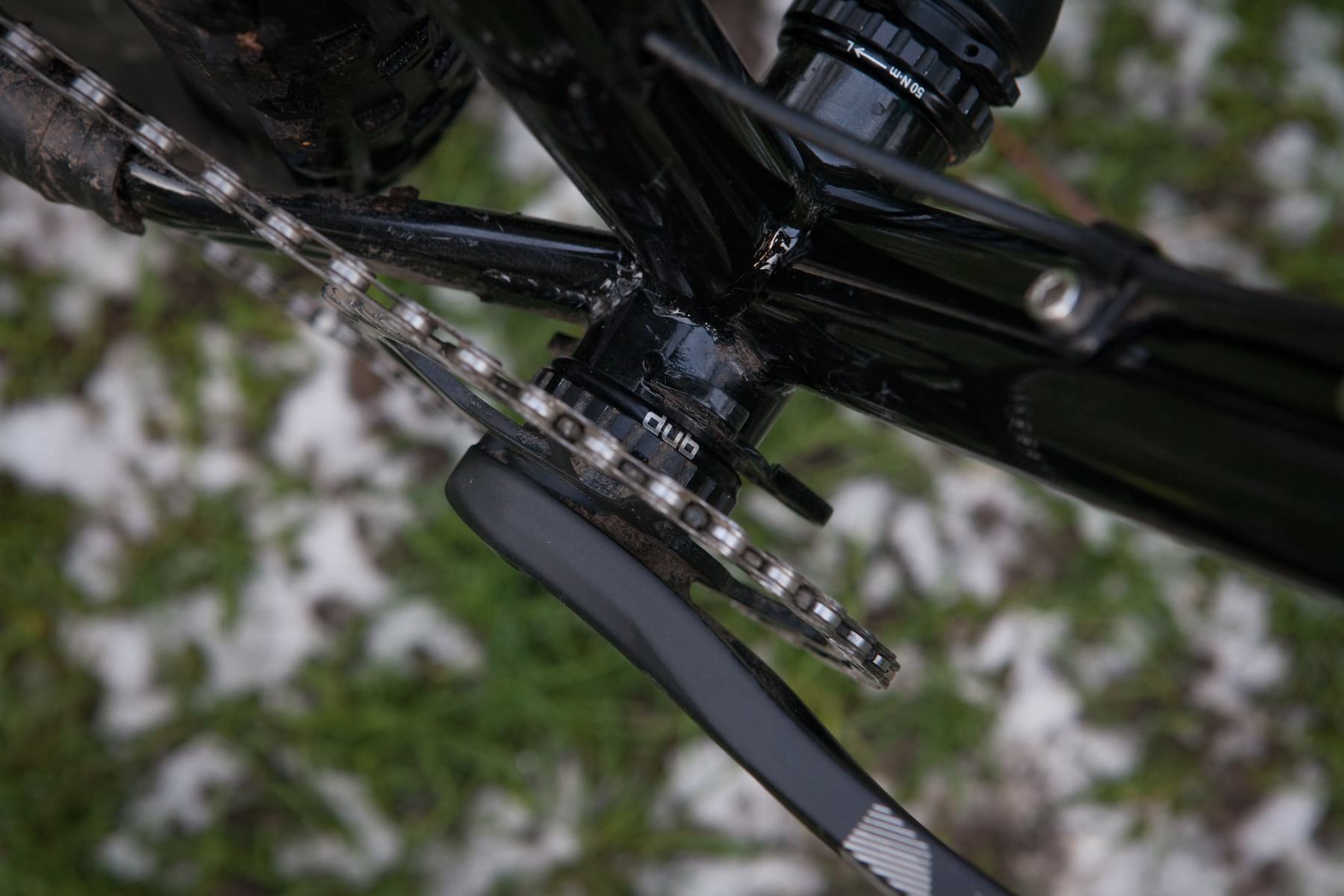
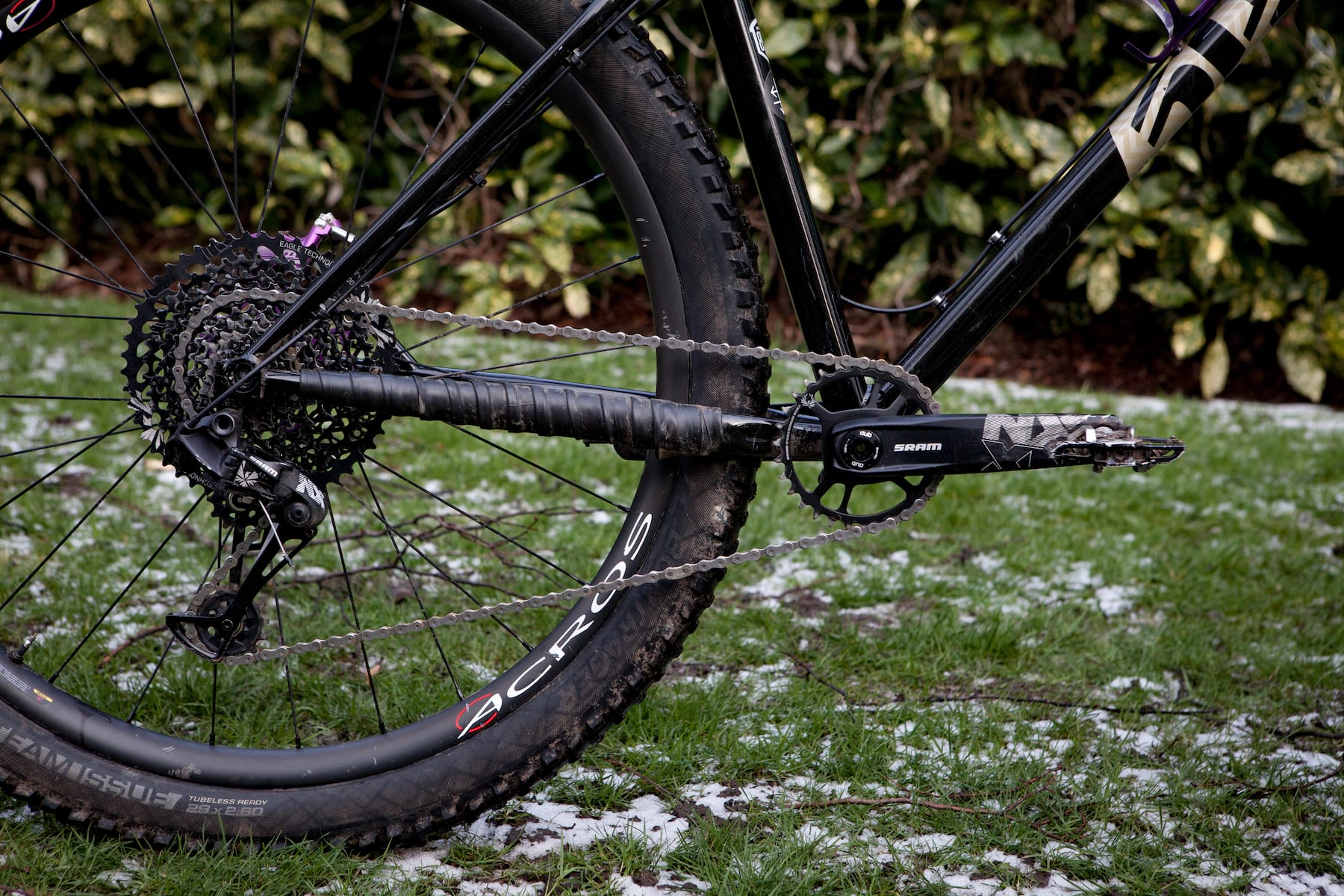
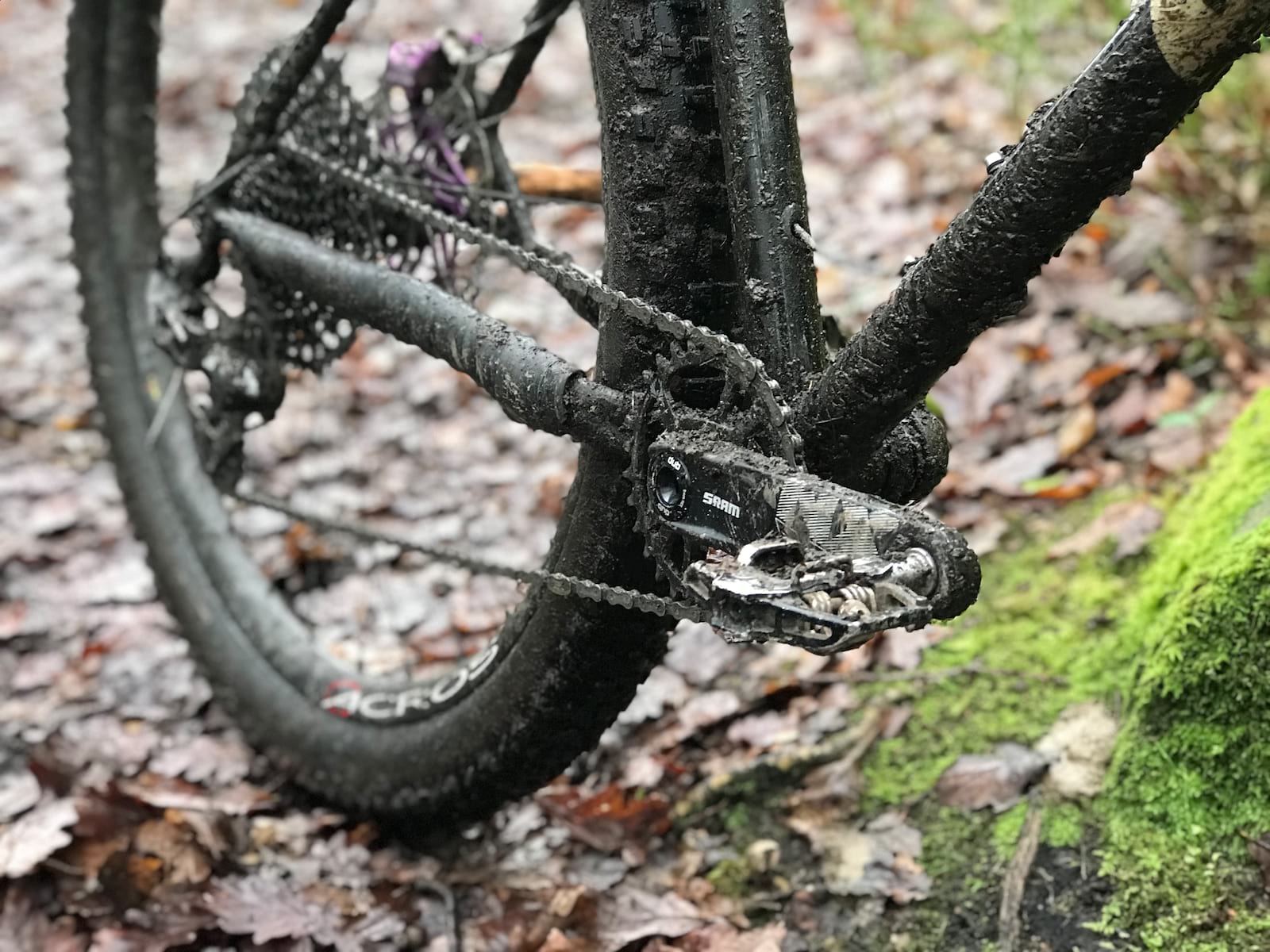
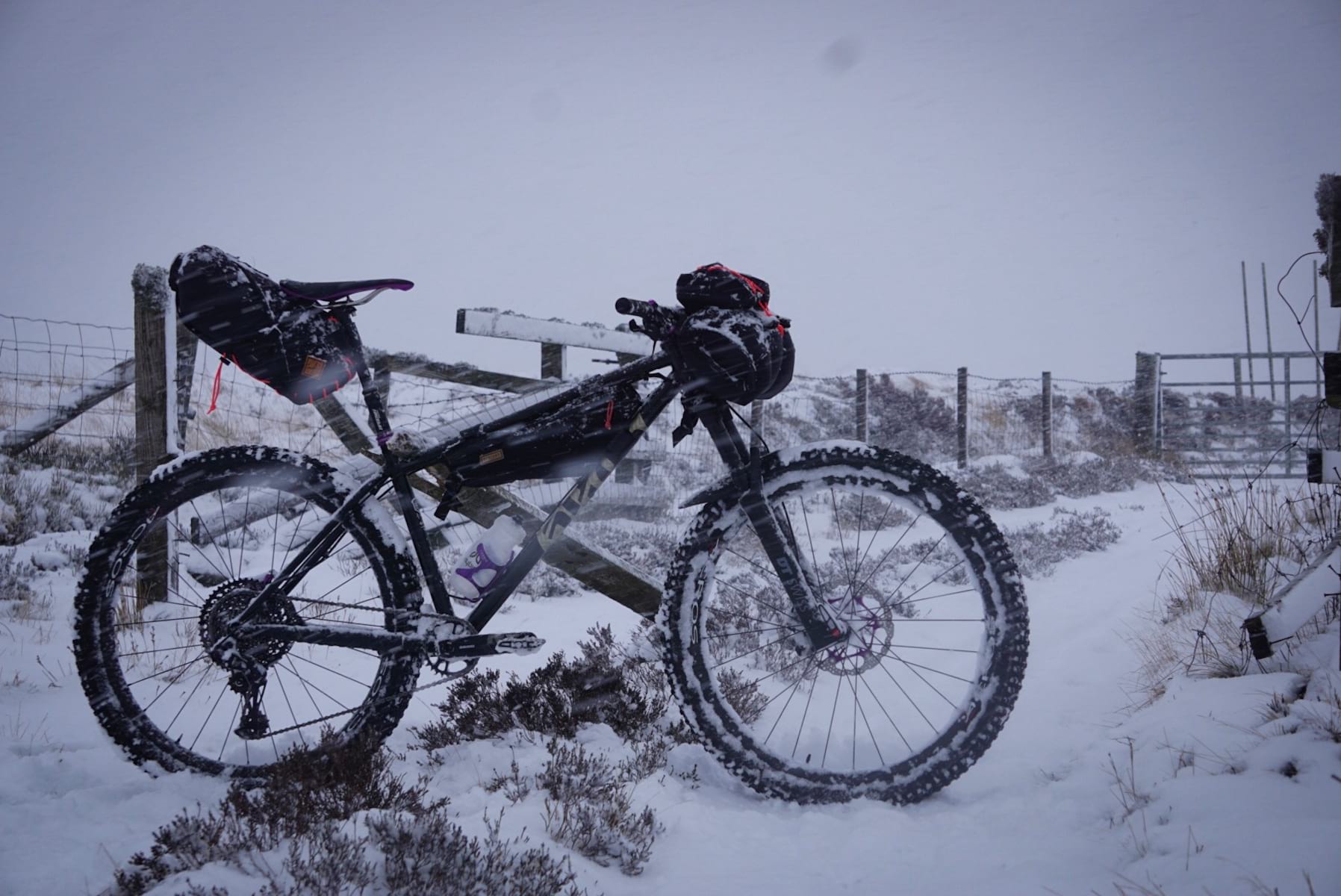
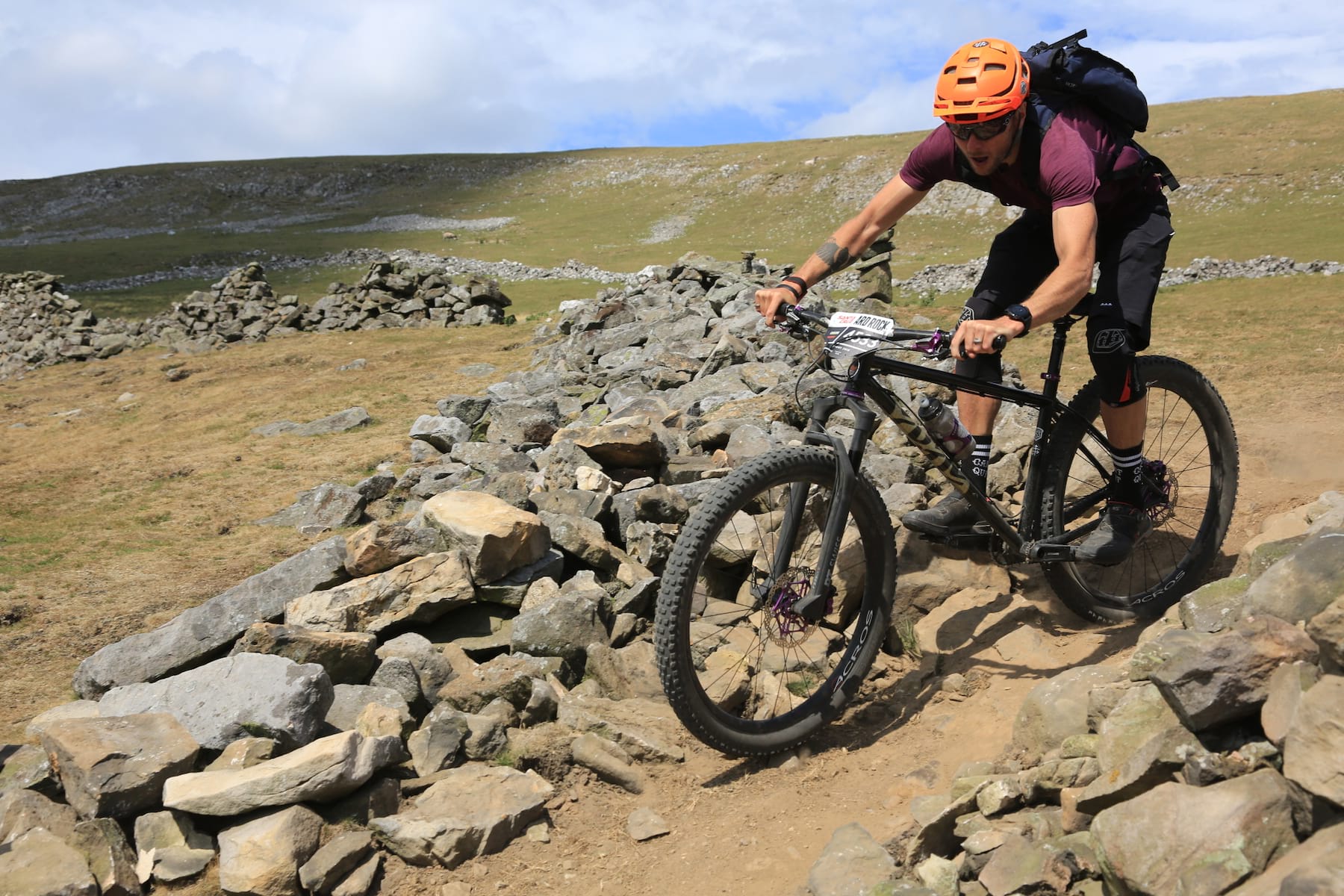
i’ve always thought the 30t chainring with a 50T on back is ridiculously low and it doesnt surprise me its hardly used. must be sram’s way to sell additional chainrings,
i’d want at least a 32t but more likely a 34t or 36t with a 50t
The chainring size is down to the end user choice/The distributor stock or the bike co. speccing them. SRAM aren’t really involved in that decision.
I run a 30T front and 50T rear (Shimano 11 speed with a Sun Race cassette), so the same ratios and I’m happy with it, and use the 50T regularly – each to their own, but maybe I just need to get fitter!
30 T 50 T rear here and its perfect for somewhere with lots of hills
One of my riding buddies has been on NX 11 speed for about two years now (2017 Norco Fluid FS 7.1) it’s lasted well with minimal maintenance. The notable exception being the plastic shifter internals which have occasionally allowed the cable to unravel inside housing, necessitating some trailside fiddling and swearing.
I’d probably look at upgrading the shifter to GX Eagle, the higher range ones don’t seem to have the same issues and we’ve not had problems in our group with GX, X1, X01 or GX Eagle shifters so far.
Other than that the NX stuff seems solid and durable. I’d back the review and say it’s well worth it if bling is less important to you than durability & cost, although there are still some GXP and BB30 GX Eagle group set bargains to be had out there for around the cost of a DUB NX Eagle group set…
Tom,
Thanks for the article, lots of detail but I’m not sure about the b/b. Do you really need to buy a DUB b/b (which appears to be extra) for this to work bearing in mind the very slight difference in spindle diameter?
Also are the prices shown for Boost frames? Did you use a Boost groupset?
@FarandAway You definitely need a DUB BB. It might not sound much but it will rattle like a stick in a bucket if you try and put a DUB crank on a 30mm BB. Although I was as dismayed as most when yet another axle size came along, our experience with DUB with supplying it on bikes is that the BB’s are very long lasting, and don’t cost that much. The DUB cranks are also quite a bit lighter than GXP so it’s a win for treaded BB frames like a Cotic.
Tom – That snowy bikepack photo is amazing!
@farandaway. Thanks for the questions! Cy beat me to most of the answers, but I’ll follow up. As he says, if you want to use the NX cranks you need the DUB BB. You can of course use any crankset you fancy though (within reason) and it will be compatible. I did use the boost version of the cranks, which is essentially just a different offset chainring. Prices are the same, regardless of whether you go for boost or regular chainline.
Just updated the 26” Rocket with nx 11 – 50 cassette with gx mech and shifter, fitted a 32 ring to my existing xt cranks. After some setting up time eventually got it all working and have to say over the past week it’s has been spot on. The 26” wheels look a bit lost against the cassette and mech but an upside is if I get a flat I’ll be able to roll home on the bottom jockey wheel.
Many thanks for the answers.
ps. Great ‘Ard Rock action photo